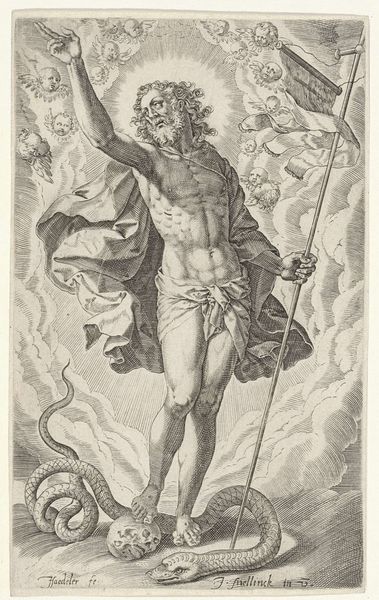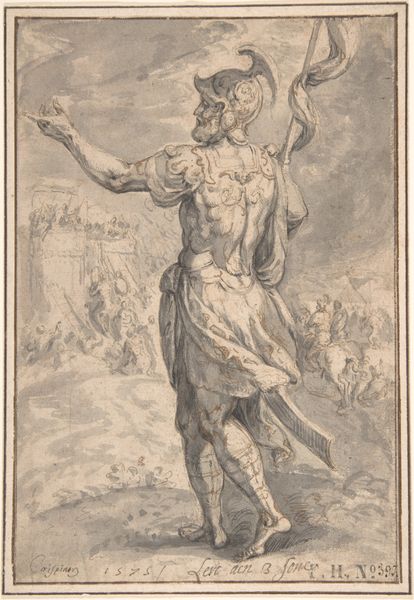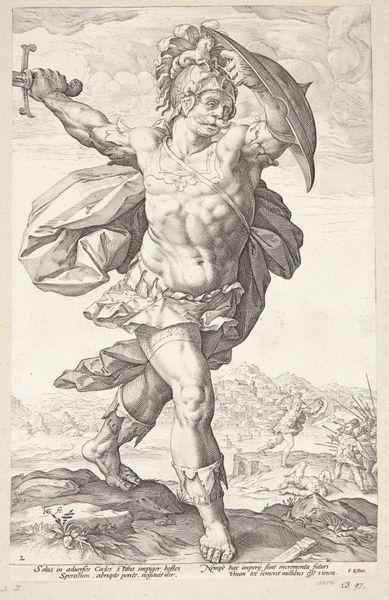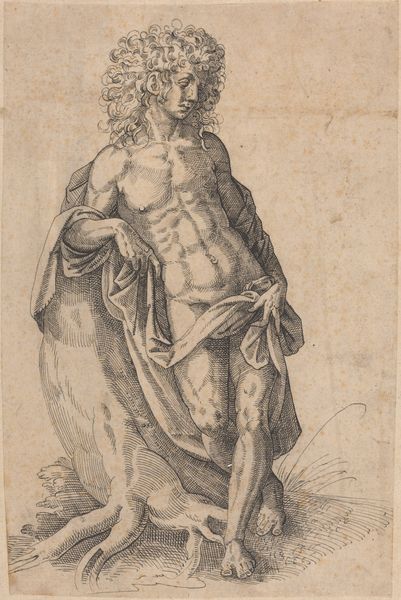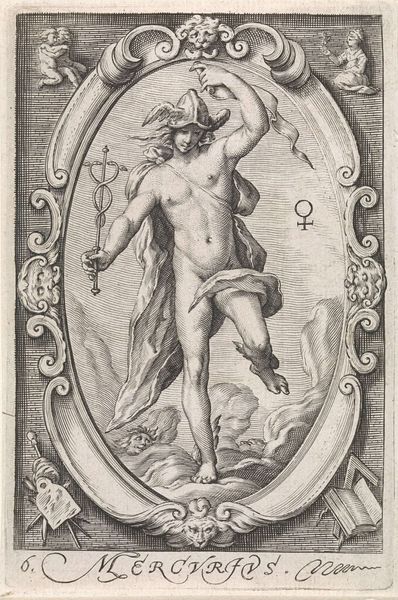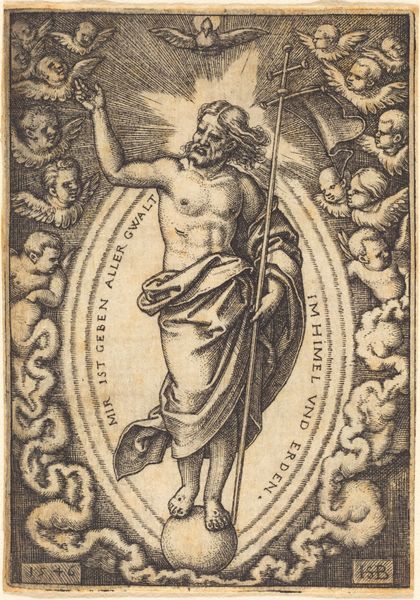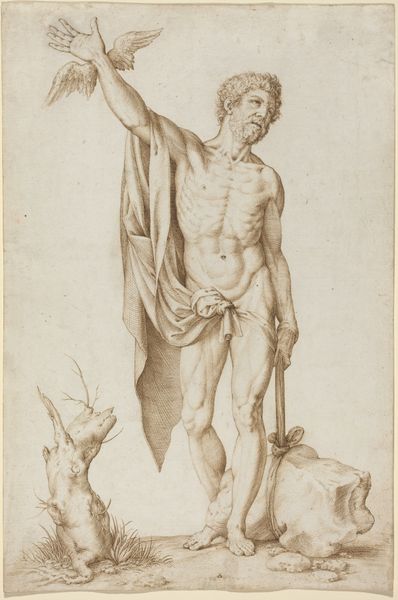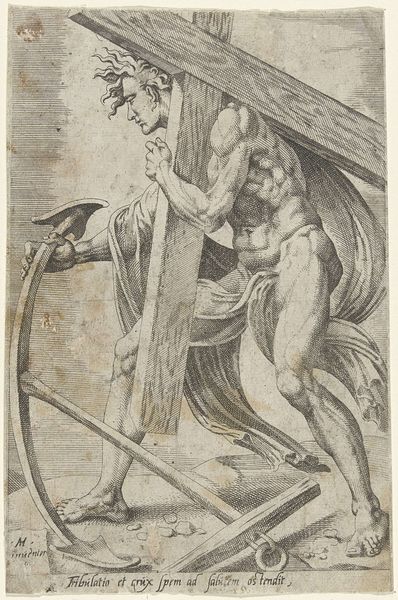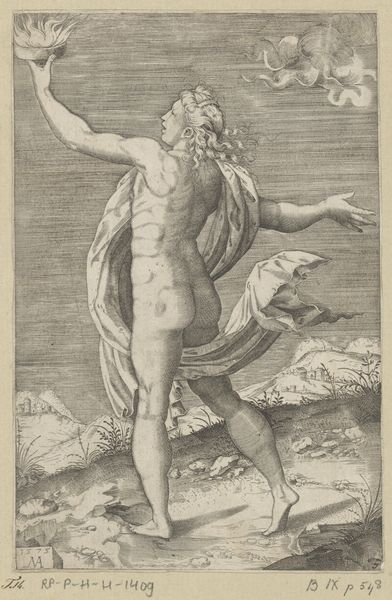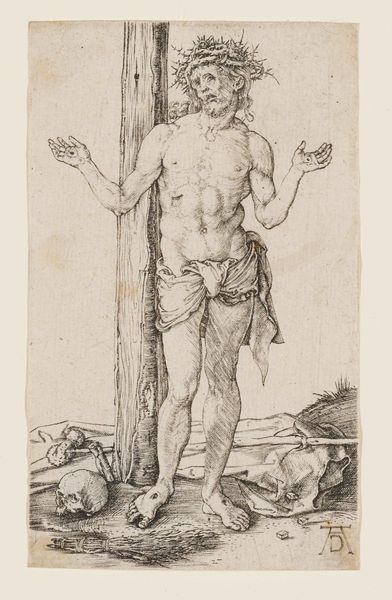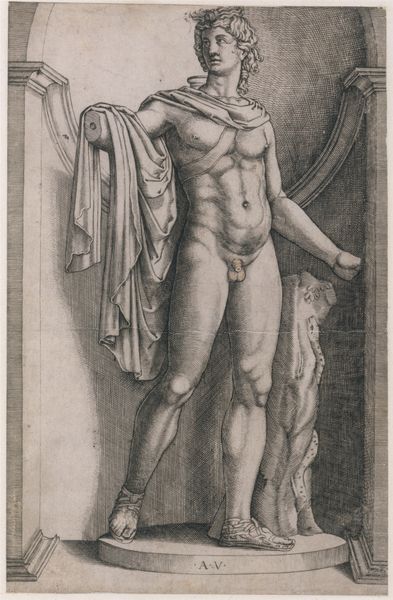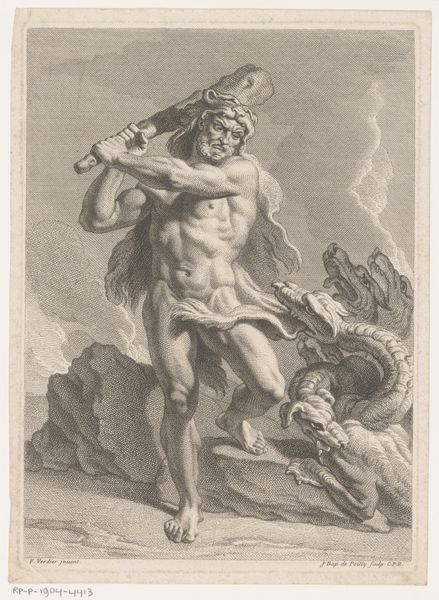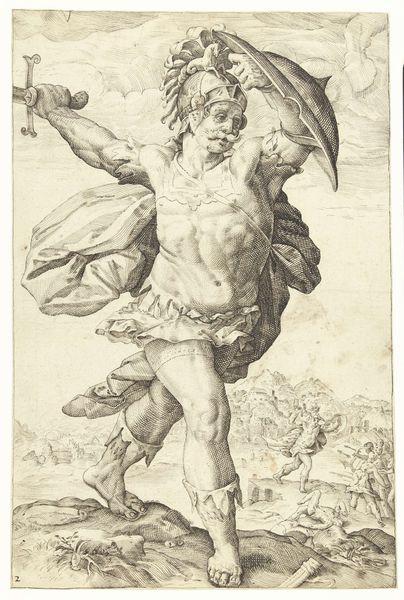
drawing, print
#
drawing
#
toned paper
#
light pencil work
# print
#
pencil sketch
#
charcoal drawing
#
charcoal art
#
pencil drawing
#
underpainting
#
portrait drawing
#
watercolour illustration
#
watercolor
#
christ
Dimensions: sheet: 4 1/4 x 2 13/16 in. (10.8 x 7.1 cm)
Copyright: Public Domain
Editor: This is "Resurrection of Christ," a drawing likely created between 1550 and 1630 by an anonymous artist. It’s currently at the Metropolitan Museum of Art. I find the use of light and shadow really striking, creating a dramatic effect. How do you interpret this work? Curator: Well, what immediately strikes me is how this image, while depicting a core Christian narrative, participates in broader discourses of power and resistance. Consider how Christ is positioned: standing triumphant over the serpent, itself often a symbol of marginalized groups and the earth. Doesn’t it ask questions about whose resurrections are celebrated and whose are systematically denied? Editor: That's a really interesting way to frame it. I was mostly thinking about the religious aspects. So you see it as a commentary on social hierarchies? Curator: Absolutely. Think about the era in which this was created. Religious art was almost always also political art. The message of Christ’s resurrection could easily have been used to legitimize existing power structures, offering a promise of salvation that might distract from earthly injustices. How does the artist invite, or perhaps subtly challenge, this kind of reading? Does the artist critique or comply? Editor: I never considered the subversive potential. I was focused on the skill of the drawing itself. Looking at it now, I guess the slightly awkward positioning and the almost pained expression could be read as a questioning of this power. Curator: Exactly. It's a reminder that art doesn't exist in a vacuum. By examining the historical context, including the era’s political and social climate, we reveal latent complexities in works that, at first glance, seemed straightforward, and perhaps too focused on simply glorifying its overt subject.. Editor: This really opened my eyes. I'm definitely going to consider this historical and political lens when viewing art in the future. Curator: And I am going to rethink my relationship with religious symbolism.
Comments
No comments
Be the first to comment and join the conversation on the ultimate creative platform.
